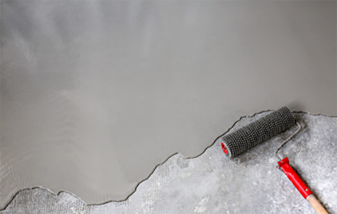
Sep . 06, 2024 16:20 Back to list
High-Performance Building Coating Adhesive with HPMC
The Role of Hydroxypropyl Methylcellulose (HPMC) in Building Coatings and Adhesives
In the construction industry, the quality and performance of building materials play a crucial role in determining the longevity and functionality of structures. Among various components used in construction, Hydroxypropyl Methylcellulose (HPMC) has emerged as a vital ingredient in building coatings and adhesives. This versatile cellulose ether offers numerous benefits, enhancing the performance of these materials in various applications.
HPMC is a non-ionic cellulose ether derived from natural cellulose. It is soluble in water and forms a thick, viscous solution that is useful in modifying the properties of construction materials. One of the primary reasons for incorporating HPMC in building coatings and adhesives is its exceptional water retention capability. This characteristic ensures that the adhesive remains workable for extended periods, allowing for adjustability during application. In coatings, it helps maintain moisture levels, preventing premature drying and ensuring optimal adhesion to surfaces.
The Role of Hydroxypropyl Methylcellulose (HPMC) in Building Coatings and Adhesives
HPMC’s role extends beyond water retention and rheology; it also contributes to the overall mechanical properties of the final product. In adhesives, HPMC increases bond strength and improves flexibility, allowing the adhesive to withstand stresses without cracking or breaking. This flexibility is crucial for applications where materials expand and contract due to temperature fluctuations. Similarly, in coatings, HPMC reinforces film integrity, resisting peeling and scaling while providing additional protection against environmental factors.
building coating adhesive hpmc

Another important characteristic of HPMC is its compatibility with a wide range of other additives used in coatings and adhesives. Its ability to blend well with substances such as pigments, surfactants, and thickeners allows formulators to create tailor-made products for specific applications. This versatility is significant in the building industry, where different projects may require unique properties such as enhanced water resistance, improved UV stability, or increased adhesion to substrates.
Moreover, HPMC contributes to the sustainability of building materials. As an environmentally friendly, non-toxic ingredient, it aligns well with the growing demand for sustainable construction practices. The use of HPMC in formulations can reduce the reliance on harmful solvents and chemical additives, contributing to healthier indoor air quality and reducing the environmental footprint of construction projects.
Additionally, HPMC’s handling and performance characteristics make it easy to work with, enhancing efficiency on job sites. Its quick dissolution in water and stable nature during storage improve the overall usability of coatings and adhesives, resulting in reduced waste and optimized application processes.
In conclusion, Hydroxypropyl Methylcellulose (HPMC) is a pivotal ingredient in the formulation of building coatings and adhesives. Its water retention, rheological properties, mechanical strength, compatibility with various additives, and sustainability benefits solidify its role in advancing the performance and quality of construction materials. As the construction industry continues to evolve, HPMC will remain a critical component in developing innovative and high-performance products that meet the needs of modern construction and architectural design.
-
Versatile Hpmc Uses in Different Industries
NewsJun.19,2025
-
Redispersible Powder's Role in Enhancing Durability of Construction Products
NewsJun.19,2025
-
Hydroxyethyl Cellulose Applications Driving Green Industrial Processes
NewsJun.19,2025
-
Exploring Different Redispersible Polymer Powder
NewsJun.19,2025
-
Choosing the Right Mortar Bonding Agent
NewsJun.19,2025
-
Applications and Significance of China Hpmc in Modern Industries
NewsJun.19,2025







